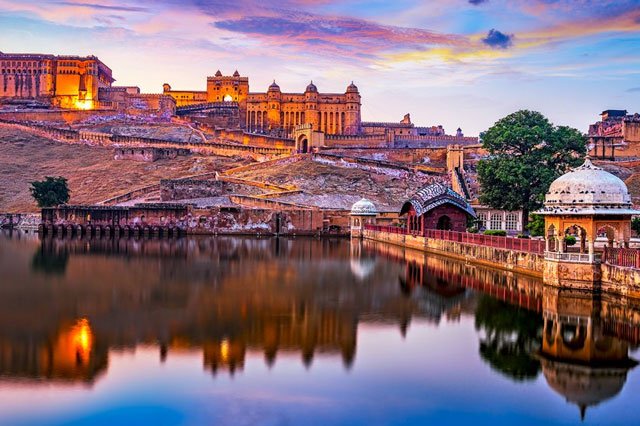Famous Markets in Rajasthan
Rajasthan, with its rich cultural heritage and vibrant traditions, is home to some of India's most fascinating markets. These bustling bazaars offer a sensory overload of colors, scents, and sounds, making them a must-visit for anyone looking to experience the true essence of the state. From intricately crafted jewelry to traditional textiles and spices, Rajasthan’s markets are treasure troves of unique and authentic items. Here’s a guide to some of the most famous markets in Rajasthan:
1. Johari Bazaar, Jaipur
Highlights: Jewelry, textiles, and handicrafts
Located in the heart of Jaipur, Johari Bazaar is renowned for its exquisite jewelry, including traditional Kundan and Meenakari pieces. The market is also famous for its vibrant textiles and traditional Rajasthani garments. Stroll through the narrow lanes of Johari Bazaar, and you’ll find shops brimming with colorful fabrics, intricate embroidery, and unique souvenirs.
Must-Visit: The Hawa Mahal, an architectural marvel, is just a stone's throw away, making it a great stop before or after your shopping spree.
2. Sardar Market, Jodhpur
Highlights: Spices, handicrafts, and traditional clothing
Sardar Market, located near the clock tower in Jodhpur, is a bustling hub of activity. The market is famous for its diverse range of spices, aromatic herbs, and colorful textiles. Don’t miss out on the traditional Rajasthani handicrafts, including leather goods, pottery, and embroidered fabrics. The market offers a vibrant atmosphere and an authentic taste of Jodhpur’s local life.
Must-Visit: The nearby Mehrangarh Fort offers stunning views of the city and a glimpse into Jodhpur’s regal past.
3. Clock Tower Market, Udaipur
Highlights: Handicrafts, jewelry, and textiles
The Clock Tower Market in Udaipur is a vibrant and lively place to explore. This market is known for its range of handicrafts, including hand-woven carpets, traditional Rajasthani attire, and beautiful jewelry. The market’s proximity to the majestic City Palace adds to the charm of the shopping experience.
Must-Visit: Take some time to explore the City Palace and enjoy a boat ride on Lake Pichola for a complete Udaipur experience.
4. Bapu Bazaar, Jaipur
Highlights: Textiles, handicrafts, and souvenirs
Another gem in Jaipur, Bapu Bazaar is renowned for its variety of textiles and handicrafts. The market is a great place to shop for traditional Rajasthani textiles, including block-printed fabrics and vibrant saris. The bazaar is also dotted with shops selling colorful souvenirs, making it an ideal spot to pick up gifts and mementos.
Must-Visit: The nearby Pink City area is perfect for exploring Jaipur’s rich architectural heritage.
5. Chandpole Bazaar, Jaipur
Highlights: Antiques, handicrafts, and traditional goods
Chandpole Bazaar, one of the oldest markets in Jaipur, is a paradise for those seeking antiques and traditional Rajasthani crafts. The market offers a diverse array of items, from vintage jewelry to handcrafted pottery. The vibrant market atmosphere and the range of unique items make it a must-visit for collectors and tourists alike.
Must-Visit: Explore the nearby Jantar Mantar, an astronomical observatory that showcases Jaipur’s historical and scientific significance.
6. Rajasthali, Jaipur
Highlights: Government-approved handicrafts and textiles
Rajasthali is a government-run emporium located in Jaipur, offering a curated selection of Rajasthani handicrafts and textiles. The store is known for its authentic products, including hand-embroidered textiles, traditional pottery, and intricate jewelry. It’s a great place to find high-quality items and support local artisans.
Must-Visit: The nearby Albert Hall Museum provides insight into Rajasthan’s history and art.










